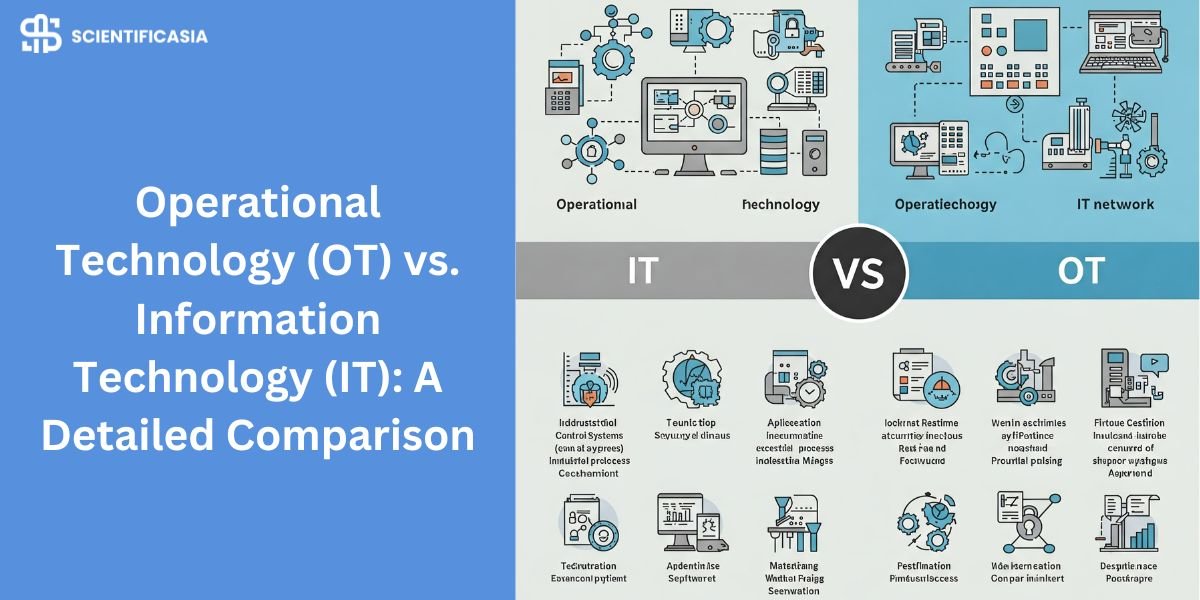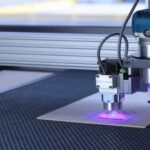Operational Technology (OT) and Information Technology (IT) serve distinct but increasingly interconnected roles in modern industries. While IT focuses on data processing, communication, and business applications, OT is responsible for monitoring and controlling physical systems, machinery, and industrial processes. The convergence of these technologies has transformed industries but also introduced new challenges, especially in cybersecurity and interoperability.
1. Definition and Purpose
Operational Technology (OT)
Operational technology refers to hardware and software used to monitor, control, and automate physical processes in industries such as manufacturing, energy, transportation, and healthcare. OT is critical for ensuring the smooth operation of industrial control systems (ICS), supervisory control and data acquisition (SCADA) systems, programmable logic controllers (PLCs), and distributed control systems (DCS).
Information Technology (IT)
Information Technology (IT) involves the use of computers, software, networks, and cloud systems to manage and process information. IT is mainly concerned with data management, communication, cybersecurity, healthcare, and business operations, supporting an organization’s decision-making processes.
2. Key Differences
| Aspect | Operational Technology (OT) | Information Technology (IT) |
|---|---|---|
| Primary Focus | Real-time monitoring, control, and automation of physical processes. | Data management, cybersecurity, and business operations. |
| Environment | Found in factories, power plants, oil rigs, hospitals, smart cities, and industrial automation settings. | Used in corporate offices, data centers, banks, educational institutions, and software companies. |
| System Components | Includes SCADA systems, PLCs, DCS, sensors, actuators, IoT devices, and industrial networks. | Includes servers, cloud computing, enterprise software, networking hardware, and cybersecurity tools. |
| Data Processing | Processes real-time data for immediate control and response. | Handles transactional and analytical data processing for decision-making. |
| Reliability vs. Security | Prioritizes system availability and reliability over security. Any downtime in OT can result in major operational failures. | Focuses on data confidentiality and security since businesses rely on secure information storage and access. |
| Interoperability | OT systems often run legacy software and proprietary protocols, making integration with modern IT systems complex. | IT systems use standardized protocols such as TCP/IP, HTTPS, and REST APIs for seamless communication. |
| Updates & Maintenance | Rarely updated due to concerns about operational disruption. Patching is slow because of 24/7 industrial operations. | Regular software updates, patches, and security upgrades are common. |
| Cybersecurity Risks | OT networks were traditionally air-gapped but are now increasingly exposed to cyber threats due to IT/OT integration. Legacy systems are vulnerable to cyberattacks like ransomware. | IT systems are frequently targeted by cybercriminals through phishing, malware, DDoS attacks, and data breaches. |
3. Use Cases and Examples
Operational Technology (OT) Use Cases
- Manufacturing – Industrial robots and automated assembly lines.
- Energy Sector – Smart grids, power plant automation, and oil pipeline monitoring.
- Healthcare – MRI machines, remote patient monitoring, and IoT-based hospital management.
- Transportation – Traffic light control systems, railway signaling, and airport automation.
- Smart Cities – Water treatment plants, smart meters, and public infrastructure management.
Information Technology (IT) Use Cases
- Enterprise Business Operations – Data management, ERP systems, cloud computing, and SaaS applications.
- Finance and Banking – Secure transactions, fraud detection, and customer relationship management.
- Cybersecurity – Firewalls, antivirus software, and data encryption to protect business information.
- E-commerce and Retail – Customer databases, inventory management, and AI-powered analytics.
- Education and Research – Online learning platforms, digital libraries, and cloud-based collaboration tools.
4. The Convergence of OT and IT
With the rise of Industry 4.0, IoT (Internet of Things), and AI-driven automation, OT and IT are becoming more interconnected. This convergence enhances predictive maintenance, real-time analytics, and digital transformation in industries. However, it also introduces challenges such as:
a) Cybersecurity Concerns
- OT systems were not originally designed for cybersecurity, making them susceptible to cyberattacks when connected to IT networks.
- Cyber threats like ransomware and malware can disrupt industrial operations, causing financial and operational losses.
- IT/OT integration demands advanced security protocols such as Zero Trust Architecture (ZTA), network segmentation, and AI-driven threat detection.
b) Interoperability Challenges
- Legacy OT systems often use proprietary communication protocols that do not align with modern IT standards.
- Many industries require custom middleware solutions to bridge the gap between OT and IT infrastructures.
c) Real-time Data Processing Needs
- OT generates vast amounts of real-time data, which IT systems must analyze efficiently.
- Technologies like Edge Computing and AI-powered analytics help process OT data for better decision-making.
5. Future Trends in OT & IT Integration
- Industrial IoT (IIoT): Sensors and smart devices in OT environments will increasingly be connected to cloud-based IT solutions.
- AI & Machine Learning: Predictive maintenance, anomaly detection, and automated decision-making will improve operational efficiency.
- 5G & Edge Computing: Faster and more reliable industrial automation and real-time data processing.
- Zero Trust Security: Implementing strict authentication and access controls to protect IT-OT integrated networks.
- Cloud & Hybrid IT-OT Infrastructure: More industries will move towards cloud-based OT management for remote monitoring and automation.
Conclusion
While OT and IT have distinct roles, their integration is reshaping industries by enhancing efficiency, automation, and cybersecurity. However, businesses must address security risks, interoperability challenges, and real-time processing requirements to fully leverage the benefits of IT-OT convergence.








